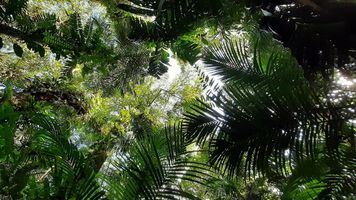Since 1972, The United Nations Environment Programme has marked 5th June as World Environment Day – an annual event for positive environmental action. This year’s Environment Day is hosted by Canada, which chose the theme of “Connecting People to Nature” – inviting citizens around the world to think about how we are part of nature and how intimately we depend on it. Jonathan Shopley takes the opportunity to review how well we are doing in respecting our critical relationship with nature.
The arrival of the Age of the Anthropocene
The origin of the modern environmental movement traces its roots to the publication of Rachel Carson’s “Silent Spring”, a scientific analysis of the detrimental effects on the environment of the indiscriminate use of pesticides, published in 1962. The intervening years have seen the publication of equally powerful treatise including Meadows et al’s “Limits to Growth” (1972), Gro Brundtland’s “Our Common Future” (1987), and Paul Hawken’s “Ecology of Commerce” (1993). They successively frame the human impact on our natural environment as an opportunity to better understand, appreciate, value, manage and enhance the natural ecosystems that sustain life on earth.
These and other studies placed our relationship with nature under the microscope, and humanity’s impact on the Earth is now considered so profound that a new geological epoch – the Anthropocene – was proposed by scientists in 2016. This new geological age recognises that the collective influence of humans was small before the dawn of the Industrial Revolution during the middle of the 18th century. However advancements in technology occurring since then have made it possible for humans to undertake widespread, systematic changes that affect several facets of the Earth system.
Our evolution as a species over the past 4 billion years has progressed under the influence of slow changes in geological conditions on earth. The Age of the Anthropocene recognises that human impacts on the natural environment have established powerful feedback loops that now drive the Earth’s evolution at an extraordinarily faster pace.
Navigating the turbulence of the Anthropocene
Evidence of human impact on the resilience of nature grows from day-to-day, and our rising awareness of the risk of losing control has driven a wide variety of political and business responses over the past 50 years. In the 1970s, environmental impact assessments became the norm for evaluating and mitigating the negative impacts of large-scale developments. After Union Carbide’s Bhopal disaster in India in 1984, environmental, health and safety management and auditing was developed as a business tool to prevent damage.
Towards the end of the 20th century, industry turned to nature for inspiration about how to mimic the extraordinary power of ecosystems to self-regulate. Janine Benyus’s concept of Biomimicry sought sustainable solutions to human challenges by emulating nature's time-tested patterns and strategies. The concepts of Circular Economy and Industrial Economy filled in the gaps as the impact of discharges from industrial processes and the impact of post-consumer waste became better understood.
From understanding to inspiration
We are developing a deeper understanding of these impacts from the fire-hose of environmental data collected by a myriad of satellites and a growing internet of environmental sensors which provide an ever clearer picture of our whole earth impacts. What we’re lacking now is the ability to read that data in a way which strengthens our ability to protect and enhance the systems that sustain and support our economic and social well-being. Big data analytics and artificial intelligence will have a critical role to play as we seek to make sense of all the measurements that are supposed to make us better managers of the natural capital assets upon which our evolutionary trajectory depends.
When Canada, this year’s host of World Environment Day, calls on us to connect with nature, they don’t mean through big data analytics, biomimicry or circular economics. I think they are suggesting that as important as it is to measure and understand our impact as a means to repair and protect the environment, it is more important to reflect on the fact that the natural environment sustains the world in ways that we simply cannot yet analyse and understand.
Earlier this year I spent a week in Rimba Raya, a rainforest protection project in Borneo. While I was there, I witnessed the release of five orangutans, orphaned by the ingress of palm-oil into their natural habitat, into an area of forest rehabilitated by the project with funding from our clients. I was watching the release with Dr Birutė Galdikas , the world leading academic on orangutans, who pointed out that orangutans share 98% of their DNA with humans. As we stared into the brown eyes of the soon to be free animals, we could only wonder that a 2% difference makes to our relationship with orangutans so complex. We spoke too about the fact that the largest species on earth is mushroom mycelium that can stretch for kilometres, and move tonnes of nutrients and energy through the earth without our even being aware of it.
As we celebrate World Environment Day in 2017, our increasing ability to monitor, measure and analyse our impacts on nature is a positive step. However, we should not forget that the complexity of nature puts it way beyond our ability to fully understand how it works. We need to be wise and alert to the fact that the Anthropocene could still be our making or our undoing.
Aktuelle News

UK Government Launches Voluntary Carbon and Nature Markets Consultation
Climate Impact Partners comments on the launch of the UK Government's consultation on raising integrity in Voluntary Carbon and Nature Markets.
Weiterlesen
Groundbreaking AI platform launched to deliver real-time, personalised climate policy insights to corporates
Supported by Climate Impact Partners and with investor funding, Maiven, a new AI platform, provides personalised, real-time climate policy insights.
Weiterlesen
Climate Impact Partners Comments on SBTi's Corporate Net-Zero Standard V2
Climate Impact Partners' CEO, Sheri Hickok, shares views on SBTi's draft Corporate Net-Zero Standard V2, now open for consultation.
WeiterlesenDie neuesten Insights von
Climate Impact Partners

Buying Smart: How to Avoid the Carbon Credit Crunch
As carbon markets evolve, demand for high-integrity credits is set to outpace supply as early as 2030—with some buyers already feeling the squeeze.
Weiterlesen
SBTi Net Zero Draft V2.0: Your Key Questions Answered
Climate Impact Partners experts answer key questions on the SBTi's draft Corporate Net Zero Standard V2.0.
Weiterlesen
Navigating the SBTi's Proposed Net-Zero Revisions: Implications for Carbon Credits, Removals, and BVCM
An overview of the key updates from the SBTi’s proposed Corporate Net Zero Standard (V2.0) and implications for carbon credits.
Weiterlesen












